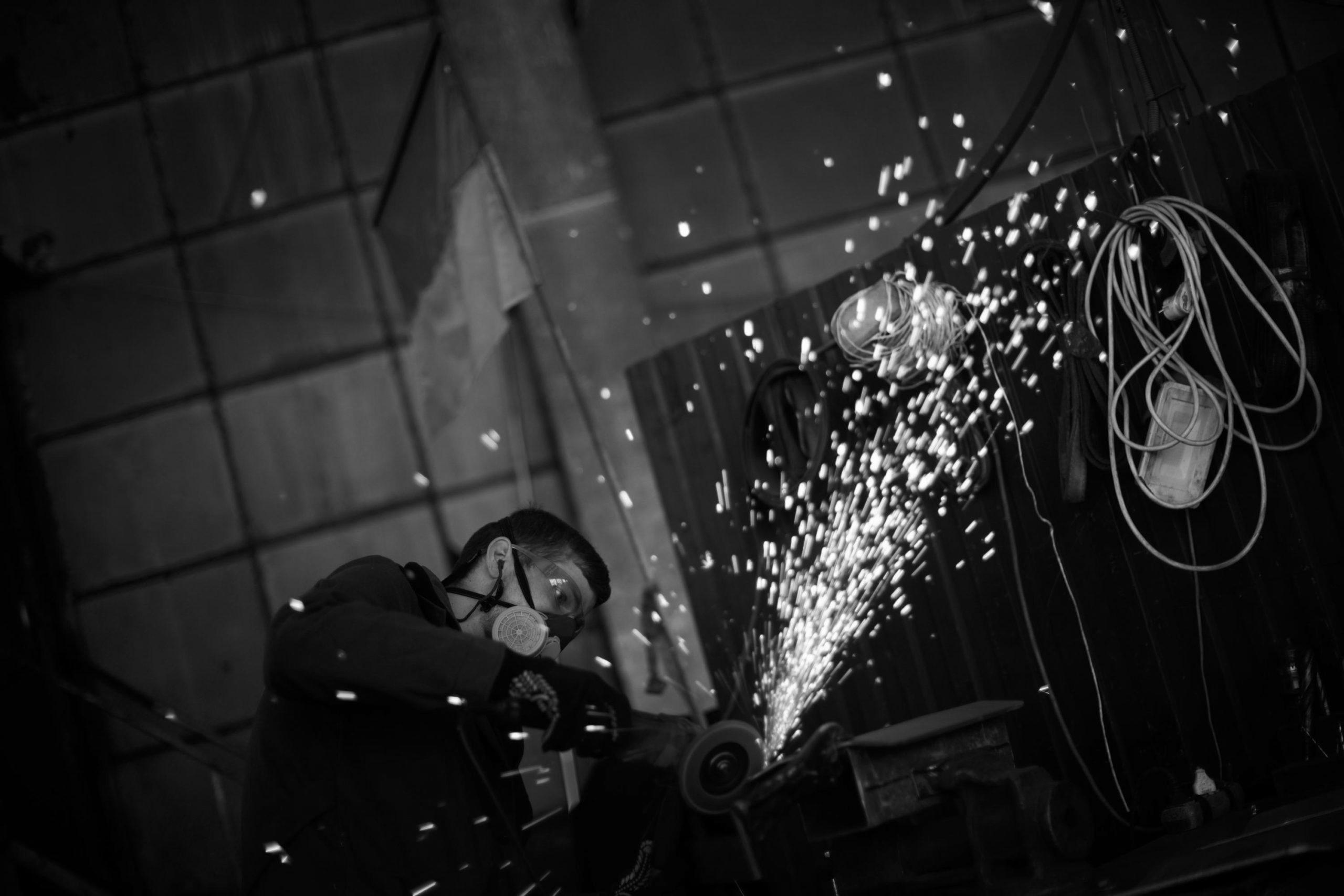Protect the physique: Ukraine volunteers craft armor, camouflage
Warning: Undefined variable $post_id in /home/webpages/lima-city/booktips/wordpress_de-2022-03-17-33f52d/wp-content/themes/fast-press/single.php on line 26

2022-05-09 09:16:18
#Protect #body #Ukraine #volunteers #craft #armor #camouflage
ZAPORIZHZHIA, Ukraine (AP) — Sparks fly as a circular noticed slices into metal, while welders close by work feverishly to the sound of blaring heavy metallic. Upstairs, stitching machines clatter as girls mark patterns on fabric being shaped into bulletproof vests.
An old industrial complex in the southeastern Ukrainian riverside metropolis of Zaporizhzhia has grow to be a hive of exercise for volunteers producing all the things from body armor and anti-tank obstacles to camouflage nets, moveable heating stoves and rifle slings for Ukrainian troopers preventing Russia’s invasion. One section specializes in vehicles, armor-plating some, changing others into ambulances. Another organizes meals and medical deliveries.
With the entrance line about 50 kilometers (30 miles) from the town, some sections of the operation, such as the stitching of bulletproof vests, are working around the clock in shifts to satisfy demand. Crowdfunding has introduced in sufficient cash to purchase metal from Sweden, Finland and Belgium, which is lighter than local steel, organizers say, a vital quality for body armor.
The operation is the brainchild of native superstar Vasyl Busharov and his buddy Hennadii Vovchenko, who ran a furniture-making business. They named it Palianytsia, a type of Ukrainian bread whose title many Ukrainians say can't be pronounced properly by Russians.
The operation relies completely on volunteers, who now number more than 400 and come from all walks of life, from tailors to craftsmen to legal professionals. Other than those concerned in production, there are additionally drivers delivering humanitarian aid and medical gear purchased by means of donated funds.
“I really feel I'm needed here,” mentioned clothier Olena Grekova, 52, taking a quick break from marking fabric for vests.
When Russia invaded on Feb. 24, she was in Thailand in search of inspiration for her spring collection. Initially, she mentioned, she puzzled whether it was a sign from God that she shouldn’t return. Her husband and two grownup sons urged her not to.
“However I decided that I had to go back,” she mentioned.
She had known Busharov for years. Arriving dwelling on March 3, she gathered her gear the following day and by March 5 was at Palianytsia. She’s been working there day by day since, bar one, generally even at night.
Shifting from designing backless ballgowns to creating purposeful bulletproof vests was “a new experience for me,” Grekova mentioned. But she sought suggestions from soldiers for her designs, which have armor plates added. Now she helps to supply a number of variations, including a prototype summer time vest.
In another section of the industrial complex, 55-year-old Ihor Prytula was busy making a new camouflage internet, winding pieces of dyed material by means of a string frame. A furniture-maker by commerce, he joined Palianytsia at the beginning of the struggle. He had some navy experience, he said, so it was easy to get suggestions from troopers on what they needed.
“We communicate the same language,” he mentioned.
For Prytula, the battle is personal. His 27-year-old son was killed in late March as he helped evacuate individuals from the northern town of Chernihiv.
“The battle and death, it’s bad, belief me, I do know this,” he stated. “It’s dangerous, it’s tears, it’s sorrow.”
The decision for volunteers went out as soon as the struggle began. Busharov introduced his challenge on Fb on Feb. 25. The following day, 50 individuals turned up. “Next day 150 folks, subsequent day 300 folks. ... And all together, we attempt (to) protect our metropolis.”
They began out making Molovov cocktails in case Russian troopers superior on Zaporizhzhia. In 10 days, they produced 14,000, he said. Then they turned to producing anti-tank obstacles generally known as hedgehogs — three large metallic beams soldered collectively at angles — used as part of the city’s defenses. Soon, Busharov and Vovchenko said, they discovered another urgent want: there weren’t sufficient bulletproof vests for Ukraine’s soldiers.
However studying learn how to make something so specialised wasn’t straightforward.
“I wasn’t truly linked with the navy in any respect,” mentioned Vovchenko. “It took two days and three sleepless nights to know what needs to be finished.”
The crew went by way of various forms of metal, making plates and testing them to test bullet penetration. Some didn’t supply enough safety, others had been too heavy to be functional. Then that they had a breakthrough.
“It turns out that steel used for automobile suspension has superb properties for bullet penetration,” Vovchenko stated, standing in front of 4 cabinets of test plates with various degrees of bullet damage. The one manufactured from car suspension steel showed dozens of bullet marks but none that penetrated.
The vests and every part else made at Palianytsia are offered free to troopers who request them, so long as they will prove they're in the military. Every plate is numbered and each vest has a label noting it's not for sale.
To this point, Palianytsia has produced 1,800 bulletproof vests in two months, Busharov said, including there was a waiting checklist of around 2,000 extra from all over Ukraine.
Vovchenko mentioned they've heard about up to 300 folks whose lives have been saved by the vests.
Knowing that's “incredibly inspiring and it keeps us going,” he stated.
____
Inna Varenytsia in Zaporizhzhia, Ukraine, contributed.
___
Comply with all AP stories on the war in Ukraine at https://apnews.com/hub/russia-ukraine
Quelle: apnews.com